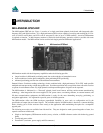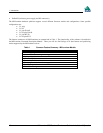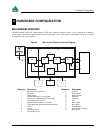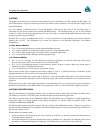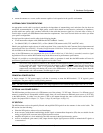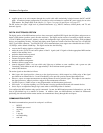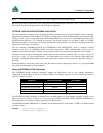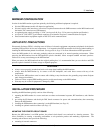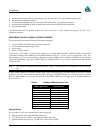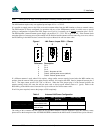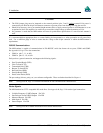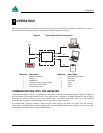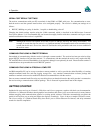
2 Hardware Configuration
MiLLennium GPSCard and Enclosures Guide to Installation & Operation 17
Note: The GPSCard COMn command can be used to change any of these default settings.
Pin-outs are the same for both serial ports. Both ports utilize standard DE9P connectors. Table 6 Serial Port Pin-Out
Description, Page 50 lists the pin-outs for each serial port configuration.
OPTIONAL USER-SUPPLIED EXTERNAL OSCILLATOR
For certain applications requiring greater precision than what is possible using the on-board 20 MHz, voltage-controlled,
temperature-compensated crystal oscillator (VCTCXO), you may wish to connect the MiLLennium to an external, high-
stability oscillator. This is only possible with a MiLLennium GPSCard on its own or in a PowerPak II enclosure, not if
the MiLLennium GPSCard is in a ProPak II enclosure. The external oscillator can be either 5 MHz or 10 MHz.
MiLLennium has built in clock models for OCXO, rubidium and cesium oscillators. You can also set custom clock model
parameters for other types of oscillators.
The two commands EXTERNALCLOCK and EXTERNALCLOCK FREQUENCY relate to external oscillator
operation, see the Using the EXTERNALCLOCK Commands section below. When a MiLLennium is powered on, the
external oscillator input is disabled. Therefore, if an external oscillator is never used, these commands are not needed.
Installation consists of simply connecting the cable from the external oscillator to connector P301, see Figure 3 (Page 18)
and Figure 4 (Page 21), on the MiLLennium. The MiLLennium does not have to be powered down during this
procedure. If handling the MiLLennium directly, anti-static practices must be observed; please see Appendix A (Page 31)
for details.
On the PowerPak II, connect the coaxial cable from the external oscillator output port to the Ext. Osc. input port (SMB
male jack) on the front panel of the PowerPak II.
Using the EXTERNALCLOCK Commands
The EXTERNALCLOCK command determines whether the MiLLennium uses its own internal temperature-
compensated crystal oscillator, or that of an external oscillator, as a frequency reference. It also sets which clock model is
used for an external oscillator:
Command Reference Oscillator Clock Model
EXTERNALCLOCK DISABLE Internal
EXTERNALCLOCK OCXO External OCXO
EXTERNALCLOCK CESIUM External Cesium
EXTERNALCLOCK RUBIDIUM External Rubidium
EXTERNALCLOCK CUSTOM External User-defined parameters
The EXTERNALCLOCK DISABLE command forces the MiLLennium to use the internal oscillator, whether or not
there is an external oscillator connected to it. Do not use the EXTERNALCLOCK OCXO, CESIUM, RUBIDIUM or
CUSTOM if there is no external oscillator connected to the MiLLennium.
The EXTERNALCLOCK FREQUENCY command sets the MiLLennium to accept either a 5 MHz or 10 MHz external
oscillator frequency.
Example: externalclock frequency 5
externalclock frequency 10



